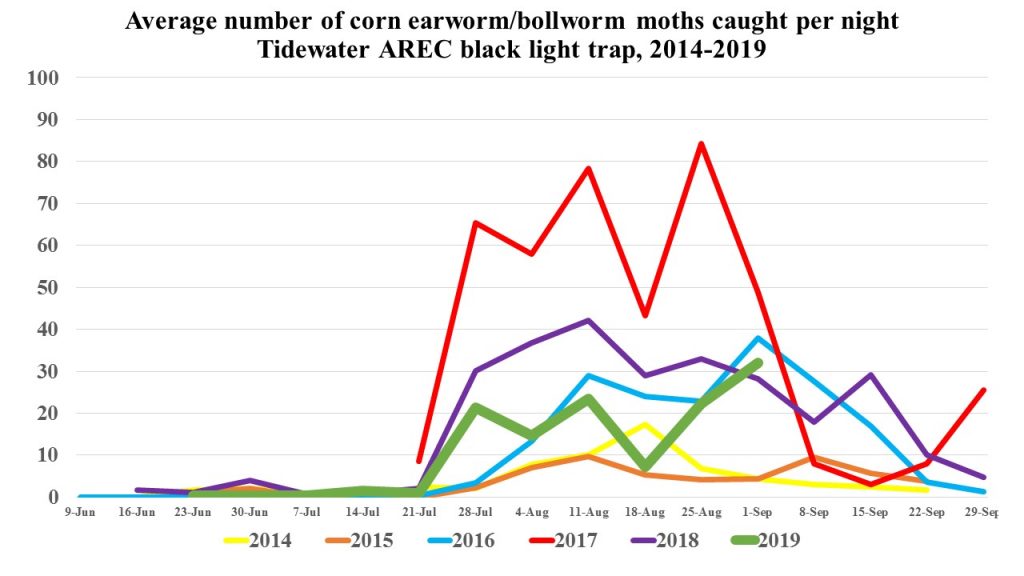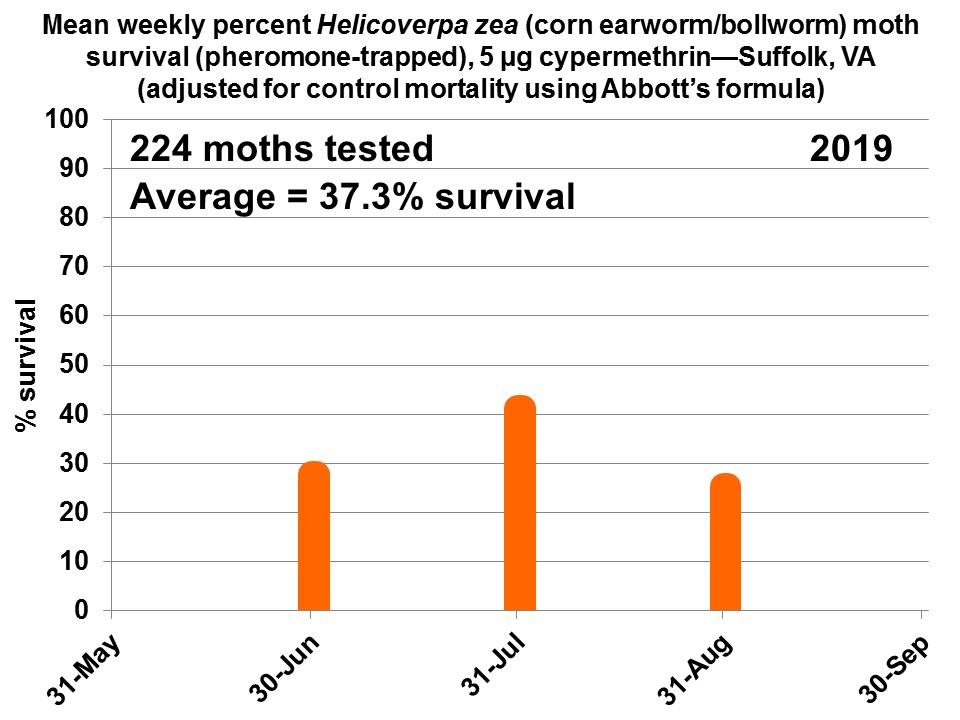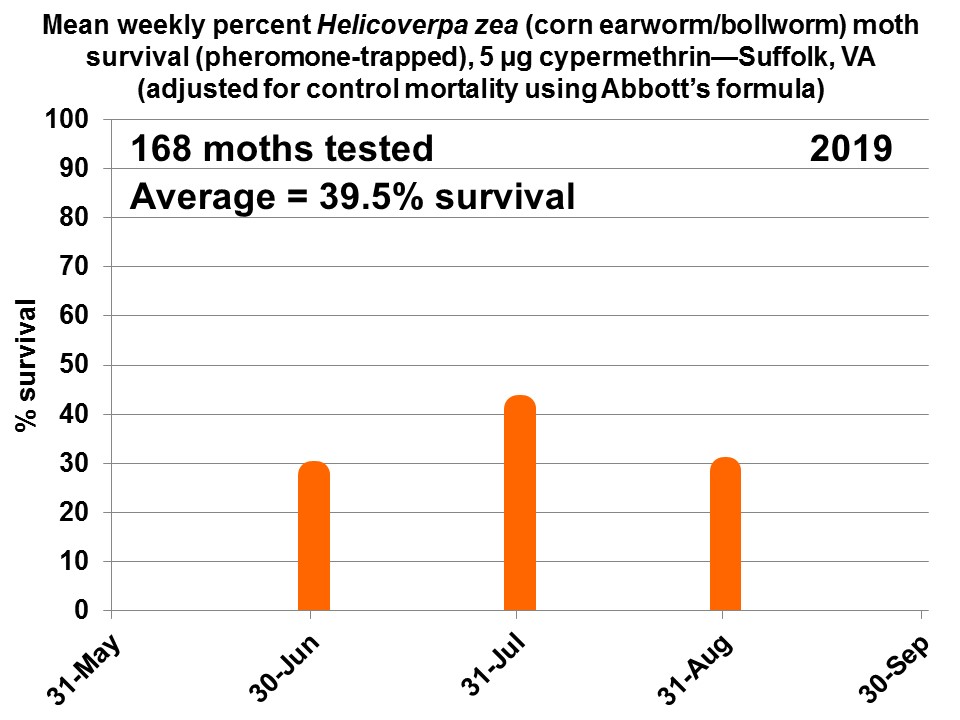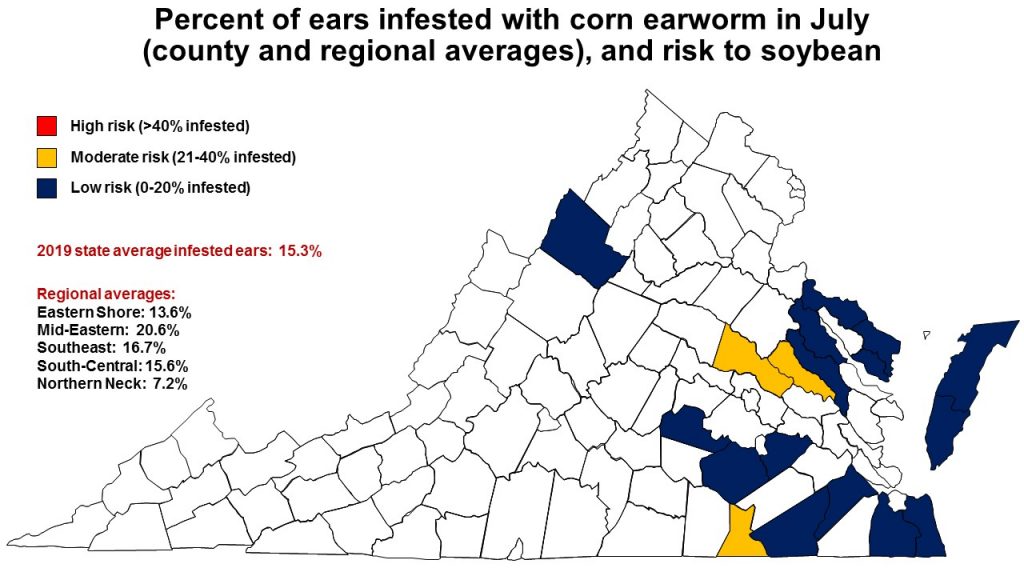Nightly corn earworm/bollworm moth averages for reporting black light trap stations this week were: Greensville=22; Prince George (Templeton)=12; Prince George (Disputanta)=10; Southampton=13; Suffolk=32. Please see the link to the table below and also compare this year’s Suffolk, VA numbers to the past several years.

I have seen a large number of corn earworm moths in our soybean at the Tidewater Agricultural Research & Extension Center in Suffolk this week. Remember to scout for larvae and use the threshold calculator for soybean: https://www.ces.ncsu.edu/wp-content/uploads/2017/08/CEW-calculator-v0.006.html
Our pheromone trap catches at Suffolk have also increased and we were able to conduct more adult vial tests for resistance monitoring using the pyrethroid cypermethrin. The average survival for this season is now 37%.



